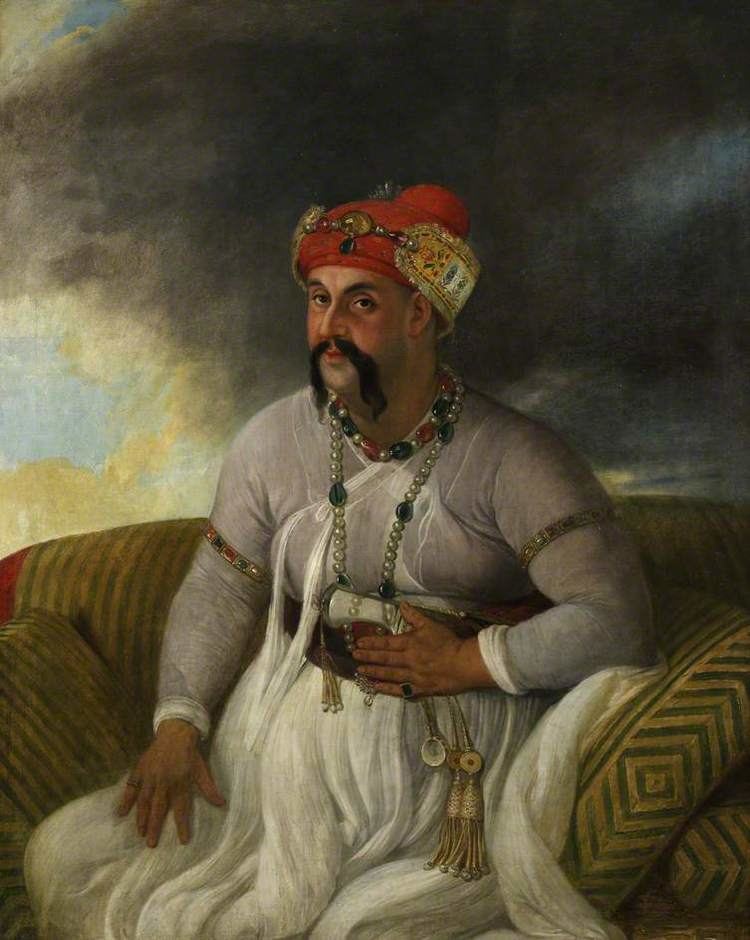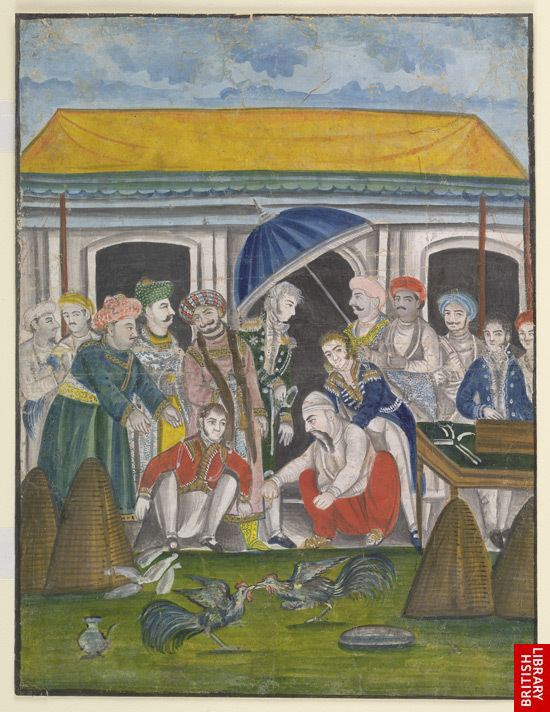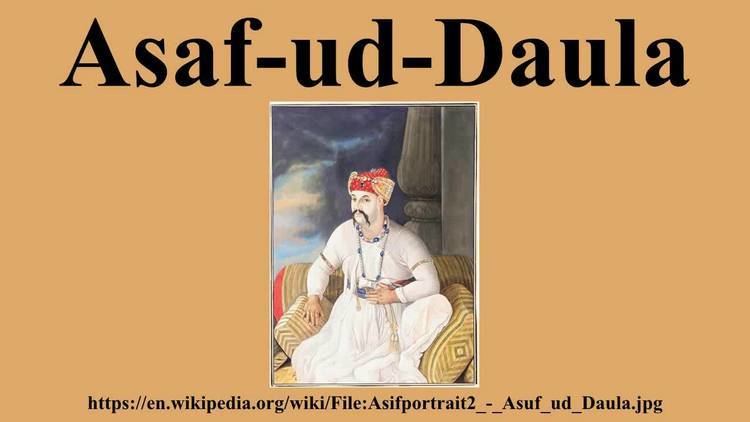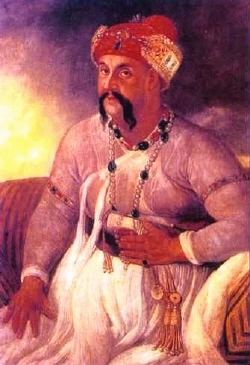Reign 1775–1797 House Nishapuri Grandparents Safdarjung Children Wazir Ali Khan | Name Asaf Daula Coronation 26 January 1775 Parents Shuja-ud-Daula | |
 | ||
Born 23 September 1748Faizabad ( 1748-09-23 ) Similar People Shuja‑ud‑Daula, Saadat Ali Khan II, Wajid Ali Shah, Wazir Ali Khan, Safdarjung | ||
Asaf ud daula
Asaf-ud-Daula (Hindi: आसफ़ उद दौला, Urdu: آصف الدولہ) (b. 23 September 1748 – d. 21 September 1797) was the nawab wazir of Oudh (a vassal of the British) ratified by Shah Alam II, from 26 January 1775 to 21 September 1797, and the son of Shuja-ud-Dowlah. His mother and grandmother were the begums of Oudh.
Contents

Reign

Asaf-ud-Daula became nawab at the age of 26, on the death of his father, Shujauddaula, on 28 January 1775.

When Shuja-ud-Daulah died he left two million pounds sterling buried in the vaults of the zenana. The widow and mother of the deceased prince claimed the whole of this treasure under the terms of a will which was never produced. When Warren Hastings pressed the nawab for the payment of debt due to the British East India Company, he obtained from his mother a loan of 26 lakh (2.6 million) rupees, for which he gave her a jagir (land) of four times the value; of subsequently obtained 30 lakh (3 million) more in return for a full acquittal, and the recognition of her jagirs without interference for life by the Company. These jagirs were afterwards confiscated on the ground of the begum's complicity in the rising of Chai Singh, which was attested by documentary evidence, as the evidence now available seems to show that Warren Hastings did his best throughout to rescue the nawab from his own incapacity, and was inclined to be lenient to the begums.
Shifting the capital

In 1775 he moved the capital of Awadh from Faizabad to Lucknow and built various monuments in and around Lucknow, including the Bara Imambara.

Nawab Asaf-ud-Dowlah is considered the architect general of Lucknow. With the ambition to outshine the splendour of Mughal architecture, he built a number of monuments and developed the city of Lucknow into an architectural marvel. Several of the buildings survive today, including the famed Asafi Imambara which attracts tourists even today, and the Qaisar Bagh area of downtown Lucknow where thousands live in resurrected buildings.
The Asafi Imambara is a famed vaulted structure surrounded by beautiful gardens, which the Nawab started as a charitable project to generate employment during the famine of 1784. In that famine even the nobles were reduced to penury. It is said that Nawab Asaf employed over 20,000 people for the project (including commoners and noblemen), which was neither a masjid nor a mausoleum (contrary to the popular contemporary norms of buildings). The Nawab's sensitivity towards preserving the reputation of the upper class is demonstrated in the story of the construction of Imambara. During daytime, common citizens employed on the project would construct the building. On the night of every fourth day, the noble and upper-class people were employed in secret to demolish the structure built, an effort for which they received payment. Thus their dignity was preserved.
The Nawab became so famous for his generosity that it is still a well-known saying in Lucknow that "he who does not receive (livelihood) from the Lord, will receive it from Asaf-ud-Dowlah" (Jisko na de Moula, usko de Asaf-ud-Doula).
Rumi Darwaza (Turkish Gate)
The Rumi Darwaza, which stands sixty feet tall, was modeled (1784) after the Sublime Porte (Bab-iHümayun) in Istanbul, is one of the very important examples of the exchange between the two cultures.
Death
He died on 21 September 1797 in Lucknow and is buried at Bara Imambara, Lucknow.
